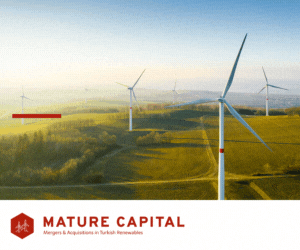Offshore
The North Sea “wind harvest” of the first half of 2018 exceeds the first half of 2017 by more than five percent

In the first half of 2018, the wind energy transferred by transmission system operator TenneT from the North Sea to the shore rose to 8.17 terawatt hours (TWh). This corresponds to an increase of 5.15 percent compared to the first half of 2017 (7.77 TWh). “We see significant potential for optimising the use of existing transmission capacities,” said TenneT’s managing director Lex Hartman. “Approximately 660 megawatts of grid connection capacity will run idle in the foreseeable future in the North Sea. The legislator could allocate these free resources to offshore wind farms via an additional tender to offshore wind farms. With an eye on the new goal of the Federal Government, according to which the share of renewable energies should reach 65 percent by the year 2030, we should use such potential to its fullest extent,” says Hartman.

In addition, TenneT is calling for western German North Sea wind farms to be linked to the Dutch electricity grid in the future. One such cost-effective solution could be a connection to Eemshaven. Because this grid connection point is located directly on the coast, it would be possible to save 100 kilometres of underground cables in Germany and thus around 200 million euros, while at the same time bypassing bottlenecks in the German electricity grid on land.
The necessary legal certainty could be achieved through a German-Dutch Treaty, which would stipulate that German wind farms will continue to be subject to German and offshore liability regulations.
In the Netherlands, TenneT is already investigating to connect to the UK by linking the future “Ijmuiden Ver” and “East Anglia” wind farms with a short cable, creating an interconnector between the two countries.
In the German North Sea, TenneT currently has ten offshore grid connection systems with a total capacity of 5,332 megawatts (MW) for transmitting wind energy from sea to land. As such, TenneT has now achieved more than 82% of the federal government’s expansion target of achieving 6,500 megawatts of offshore wind capacities by 2020. By the end of 2023, TenneT will successively complete three additional grid connection systems, which will provide 8,032 MW of transmission capacity in the North Sea.
By 2027, three more connections will be prepared by TenneT or will be pending further commissioning according to the preliminary design of the land development plan of the German Federal Maritime and Hydrographic Agency (BSH). This will increase the transmission capacity in the German North Sea to almost 11,000 MW.
The current maximum infeed performance of offshore wind farms in the North Sea reached 4,431 MW on 31 March 2018. Compared to the end of 2017, the capacity expansion of the offshore wind farms in the North Sea remained unchanged at 4,716 MW on the reporting date of 30 June 2018.
The North Sea wind harvest amounted to 8.17 terawatt hours in the first half of 2018 and, with 15.1 percent, again confirmed its strong share of total wind energy generation in Germany, which reached about 54 terawatt hours in the first half of the year.
The wind turbines in the Baltic Sea (not within the TenneT grid area) generated 0.87 terawatt hours) in the first half of 2018, which means Germany’s total offshore yield amounted to 9.04 terawatt hours). With an addition 44.95 terawatt hours) of generated onshore wind energy, the total yield is thus 53.99 terawatt hours).
-

 Events5 years ago
Events5 years agoCanada and Turkey women working in the renewable energy sector in met
-

 Manufacturers of wind turbines5 years ago
Manufacturers of wind turbines5 years agoGE’s Haliade-X 12 MW prototype to be installed in Rotterdam
-

 Operations and Maintenance6 years ago
Operations and Maintenance6 years agoGENBA is on the rise; another milestone passed by in global existence
-

 Genel8 years ago
Genel8 years agoEWT launches the DW61, It’s most efficient and high energy producing wind turbine
-

 Genel9 years ago
Genel9 years agoInternet of things will empower the wind energy power plants
-

 Turbine Manufacturing6 years ago
Turbine Manufacturing6 years agoİğrek Makina focused on developing and producing Machine Tools and Wind Energy Turbines
-

 Energy management systems5 years ago
Energy management systems5 years agoDemand/Supply – Renewable energy with guarantees of origin (GO)
-

 Events5 years ago
Events5 years agoKey Players from 10 Nations will Show Their Strong Positions at APWEE
-

 Manufacturers of wind turbines5 years ago
Manufacturers of wind turbines5 years agoThe Nordex Group receives first order for Delta4000 turbines from the USA
-

 Manufacturers of wind turbines4 years ago
Manufacturers of wind turbines4 years agoENERCON installs E-160 EP5 prototype
-

 Genel7 years ago
Genel7 years agoZorlu energy envisages a bold new future based on renewables
-

 Manufacturers of wind turbines5 years ago
Manufacturers of wind turbines5 years agoENERCON and Lagerwey together develop two new WEC types



